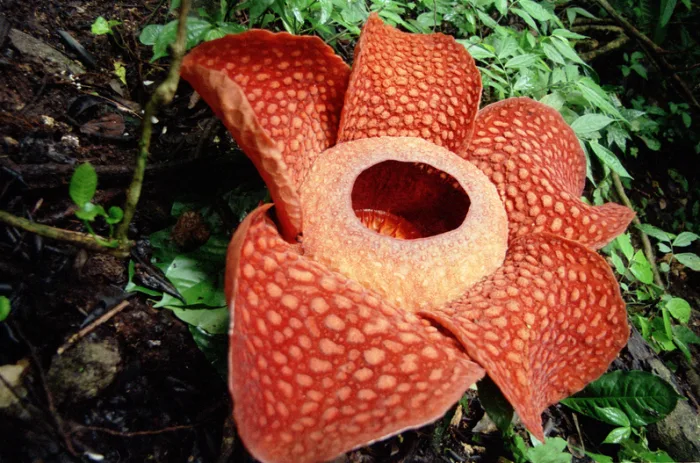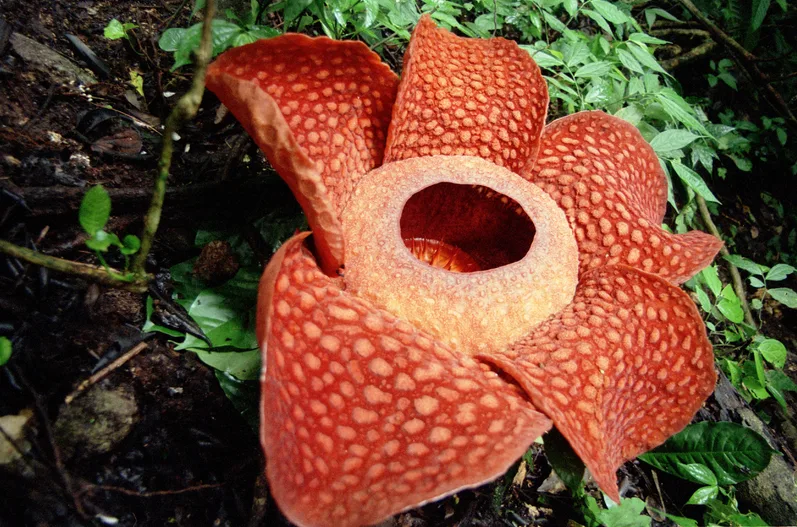
'World's largest flower' is discovered and it smells like rotting flesh
The flower's repugnant scent attracts flies and beetles, which are the main pollinators.
Wildlife officials in Indonesia say that they have found the largest flower on record, which is the Rafflesia plant that is known for its parasitic properties and foul odour that is similar to rotting flesh.
This plant is also referred to as a "monster flower" and the flower that recently bloomed in a West Sumatran forest is nearly 1.2 metres in diameter, according to CNN Indonesia. The flower grew in the same location where the previous record-breaking Rafflesia plant was found in 2017, however, this one is 10 cm wider.
It has no stems, roots, or leaves and survives by taking nutrients from a host plant to grow. These flowers flourish by infecting vines that grow on the floor of the rainforest and the only part of the Rafflesia that is visible outside of the host plant is the five-petalled flower.

Rafflesia arnoldii photographed east of the Lake Maninjau, Sumatra, Indonesia by Henrik Ishihara. Credit: Wikimedia Commons
SEE ALSO: Turkey vulture confuses smelly flower for rotting corpse
Their rotting meat odour is strongest on the third or fourth day of blooming and lasts just over one week. While many organisms would be deterred from the repugnant scent, flies and beetles are attracted to it and are the plant’s main pollinators.
Rafflesia is one of the three national flowers in Indonesia and is considered to have medicinal powers across parts of southeast Asia. After the flower blooms, it remains open for up to one week before it begins to decay.
Another plant that also produces a horrendously unpleasant odour is the Titan arum, which is made up of thousands of tiny flowers and can be grown in greenhouses across the world. Titan arum has grown in several greenhouses across Canada, including Hamilton and Vancouver, unlike Rafflesia, which has never been successfully cultivated.
Sources: CNN | Harvard Magazine






